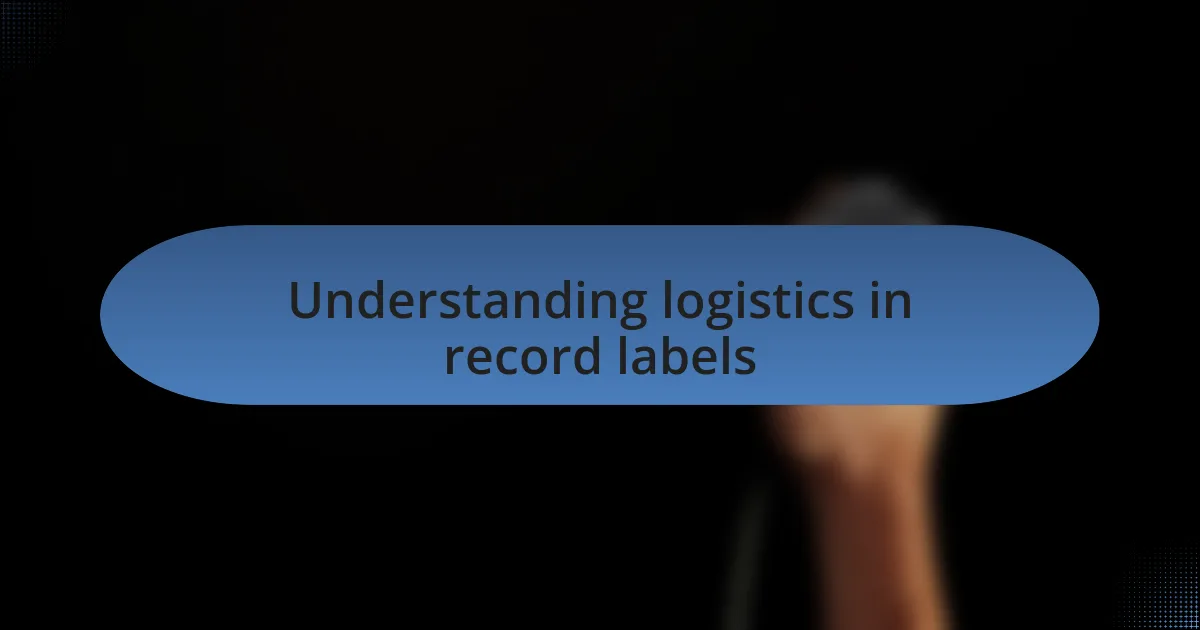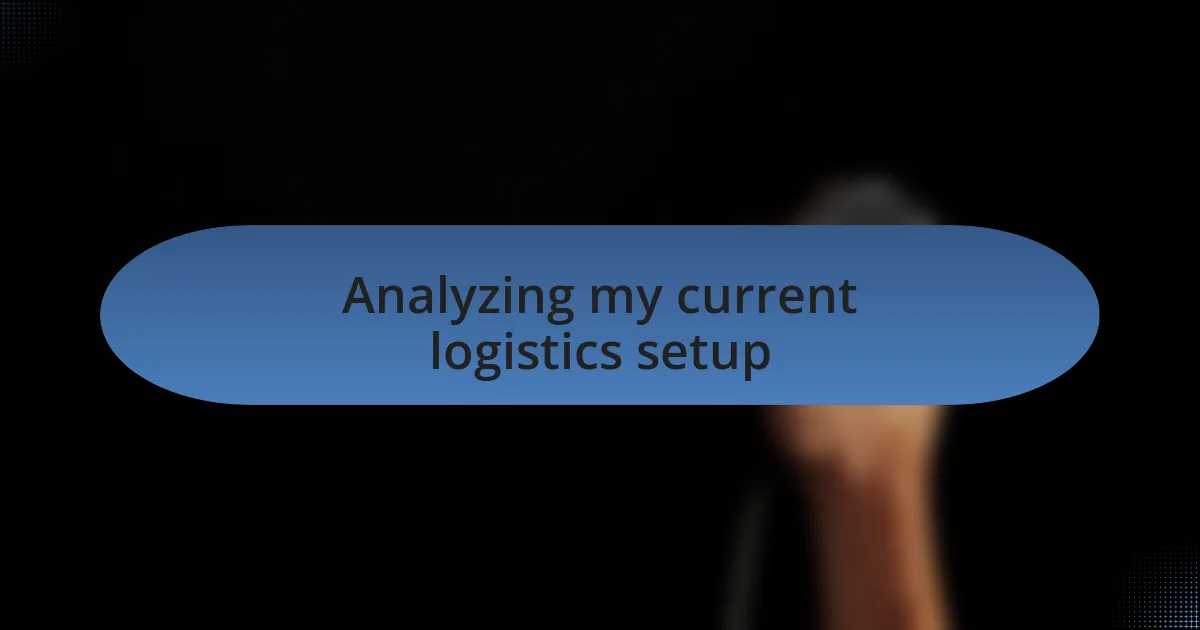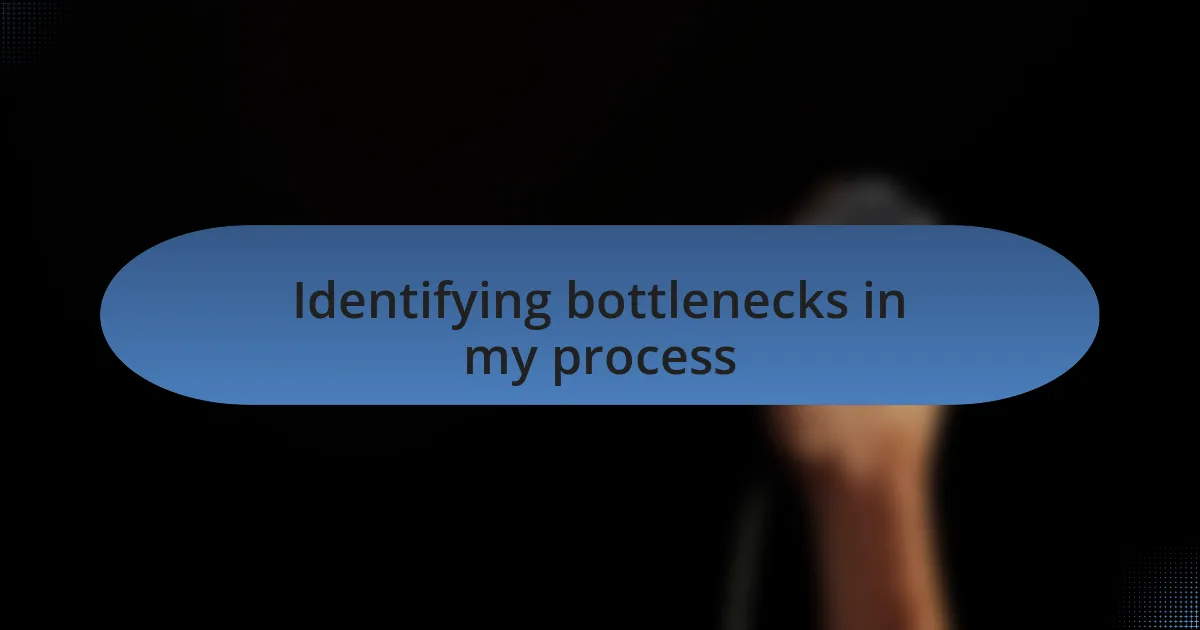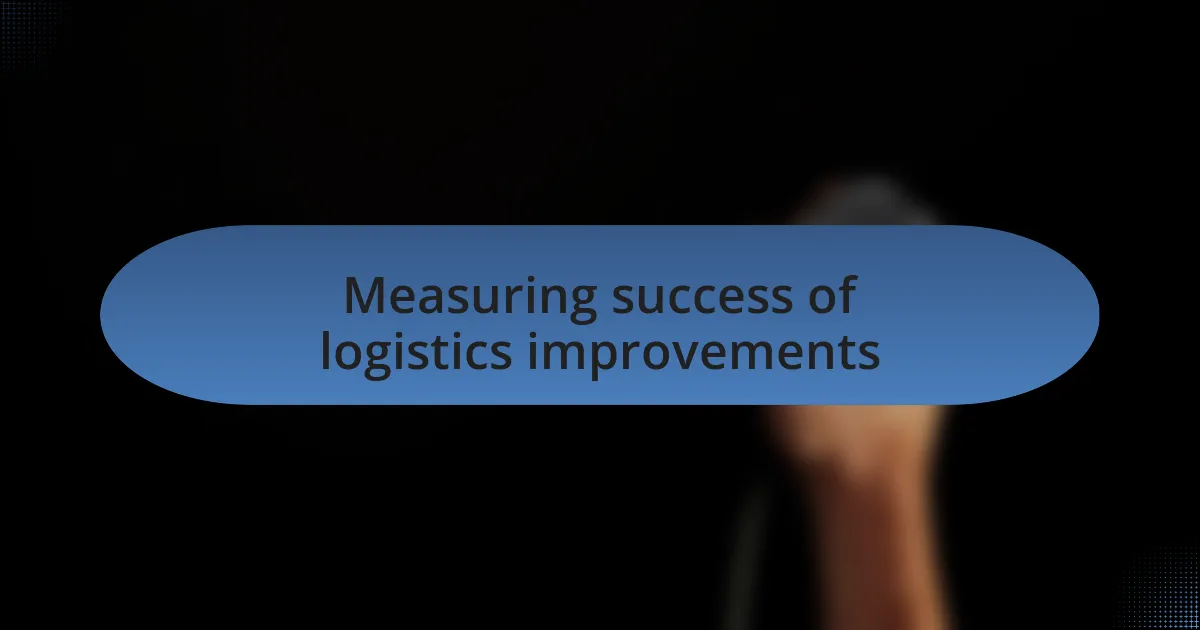Key takeaways:
- Logistics in record labels is crucial for artist success, affecting everything from album launches to tour coordination.
- Identifying and addressing bottlenecks, such as communication gaps and lengthy lead times, can significantly improve efficiency.
- Implementing centralized communication and user-friendly technology fosters a more streamlined logistics process and encourages team collaboration.
- Tracking KPIs and gathering feedback from artists and partners are essential for measuring the effectiveness of logistics improvements.

Understanding logistics in record labels
Logistics in record labels is often the unsung hero of the music industry. It’s not just about shipping physical albums; it encompasses everything from managing artist schedules to coordinating merchandise production. I remember when we struggled with delayed vinyl shipments that caused a ripple effect with promotions. That experience made me realize how crucial a streamlined logistics strategy is to maintain momentum in an artist’s career.
When I first stepped into the logistics side of a record label, I underestimated its impact on an artist’s success. Can you imagine a highly anticipated album release going off without a hitch because the logistics were flawlessly executed? I’ve seen firsthand how effective logistics can elevate an album’s launch, enhancing the artist’s reputation and driving fan engagement to new levels.
The interplay between marketing plans and logistical execution is something I’ve become quite passionate about. There’s a certain satisfaction in watching a meticulously planned tour unfold smoothly, where every element harmonizes perfectly. What if every label took the time to optimize their logistics strategy? I believe we could see a transformative shift in how artists connect with their audiences.

Analyzing my current logistics setup
Analyzing my current logistics setup has been an eye-opening experience. As I reviewed our supply chain processes, I noticed inefficiencies in our inventory management, particularly with our vinyl records. There were times when I found myself scrambling to fulfill orders, and that pressure taught me just how vital real-time inventory tracking can be.
I took a close look at our shipping partners, too. Remembering a time when we faced unexpected delays just before an album launch left me wondering how to prevent such chaos in the future. This realization prompted me to establish better communication with our carriers, which I discovered can make all the difference during critical moments.
Moreover, I began mapping out artist engagement timelines to align logistical efforts with marketing campaigns. I often think back to those whirlwind release dates when everything felt disorganized; it really highlighted the need for a cohesive strategy. It’s incredible how connecting the dots between logistics and artist schedules can eliminate headaches and ensure that nothing falls through the cracks.

Identifying bottlenecks in my process
Identifying bottlenecks in my logistics process was a revelation. I remember sitting with my team, poring over data, and realizing that our lead times for shipments were longer than they should be. It struck me that inefficiencies were not just numbers on a page; they were moments of stress that created disappointment for our artists and fans alike. How could I possibly assure our artists that their releases would be handled smoothly if I didn’t fully understand the hiccups in our system?
As I delved deeper, I found that communication gaps between departments were silently crippling our efforts. There was a time when our marketing team planned a huge promotional event, but logistics failed to deliver materials on time. The frustration was palpable, and I couldn’t help but wonder: what if better inter-department collaboration could have turned that launch into a memorable success rather than a missed opportunity? It was clear that addressing these communication barriers was essential to crafting a streamlined process.
Finally, I looked at the workflows themselves. Out of curiosity, I decided to map every step involved in our release process. In doing so, I often felt overwhelmed by how many hands touched each project, leading to potential delays. Reflecting on instances when my team had put in extra hours to meet deadlines, I recognized that simplifying these workflows could not only reduce stress but also enhance our overall efficiency. How much smoother could our operations run if we eliminated unnecessary steps? This ongoing analysis has truly transformed my approach to logistics.

Implementing changes for optimization
When it came time to implement changes, I realized that making small adjustments could create significant ripples in our logistics effectiveness. I vividly recall our team brainstorming sessions where we discussed the idea of centralizing our communication channels. This shift not only offered clarity but also allowed everyone to be on the same page, reducing the back-and-forth that had previously bogged us down. Can you imagine how empowering it felt to hear my team express their excitement at finally breaking down those silos?
Next, I took a hard look at our software tools. I still remember the frustration of one late-night meeting trying to coordinate a release while juggling multiple outdated systems. After researching user-friendly options, we adopted a more integrated logistics management platform. The transition was daunting, but seeing my team’s sighs of relief when they could track shipments in real time reinforced my belief that investing in the right technology was essential. It made me wonder: how much time and energy had we wasted in the past due to lack of visibility?
Finally, I embraced a culture of continuous improvement by encouraging my team to share feedback regularly. I recall one instance where a junior member suggested a tweak to our delivery schedule that seemed minor but ended up saving us a full day of processing time. That moment crystallized for me the importance of fostering an environment where everyone’s voice matters. How could I foster creativity and innovation if we weren’t open to ideas from every level of our organization?

Measuring success of logistics improvements
To truly gauge the success of our logistics improvements, I started tracking key performance indicators (KPIs) that aligned with our overall goals. I remember the moment when we realized that delivery times had improved by nearly 20%. It was a significant boost for our team morale. What does it say about our efficiency when the numbers speak for themselves?
Additionally, I sought feedback from our artists and partners about their experience with the new logistics processes. I vividly recall a conversation with one artist who expressed relief at how streamlined our distribution had become. Hearing their satisfaction not only reinforced my decisions but also reinforced the belief that stakeholder feedback is invaluable. Are we really optimizing if those who depend on us still feel the old frustrations?
Finally, regular team meetings to discuss our progress helped maintain momentum and accountability. I distinctly remember a lively discussion where we analyzed a drop in shipping accuracy. Instead of pointing fingers, we brainstormed solutions together. This collaborative spirit not only addressed immediate issues but also fostered a sense of shared ownership over our logistics success. How can we improve if we aren’t all invested in the outcome?